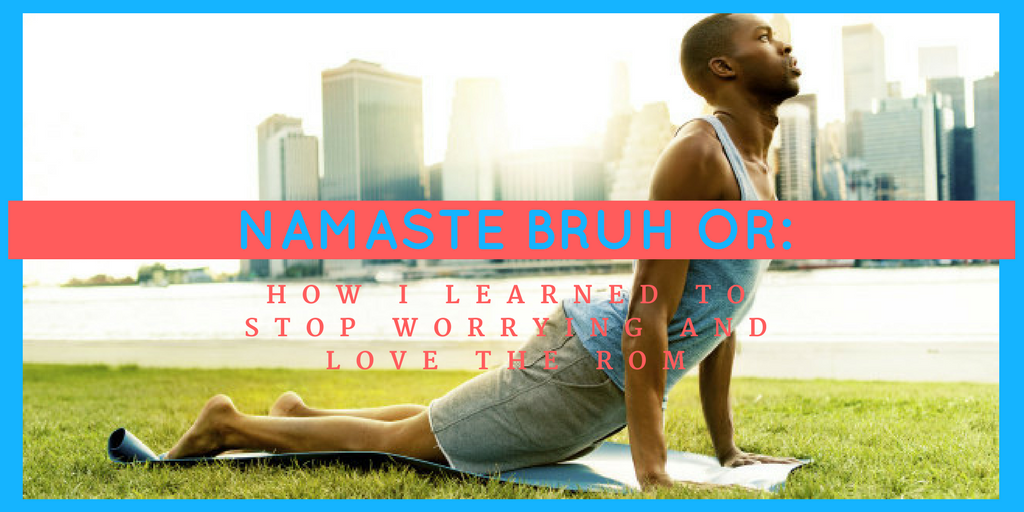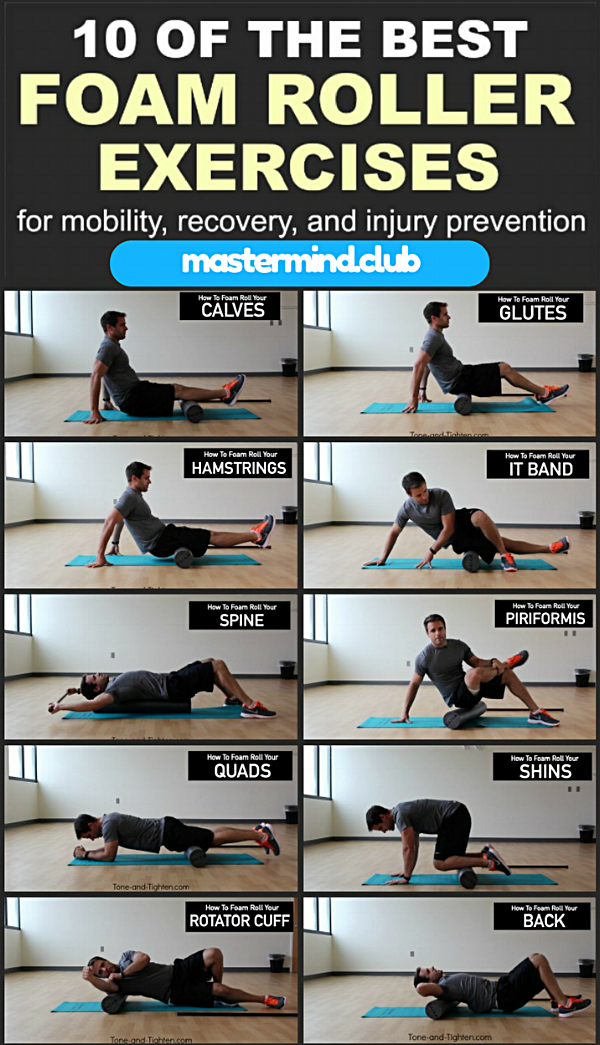Namaste Bruh or: How I Learned to Stop Worrying and Love The ROM
In other words… Why men need to focus more on warming up and flexibility to increase their range of motion ("ROM").
There are a few things that you will rarely hear in a gym (especially spoken by men):
“Bro, do you even mobilize?”
“Hatha or vinyasa?” or
“Yo, I increased my hamstring flexibility by 15 degrees!”
You are more likely to hear:
“Bro, do you even lift”
“What do you bench?” or
“Yo, I got a 10 pound PR!”
Culturally, men have been socialized to focus on strength, and the various ways which this can be expressed in the gym. Very rarely is there an emphasis on flexibility and/or range of motion (“ROM”).
Ironically, it is this lack of time spent warming up, working on mobility and stretching that can at times minimize the “gainz” that are so often sought after in the gym.
For most, the connection between hamstring flexibility and squatting heavier, shoulder mobility and a stronger bench, and proper warm-up for overall workout productivity, are ignored.
Research finds that the socialization and masculinization of health and fitness for men (Isacco & Rogers, 2008) often leads them to ignoring the more “feminine” aspects of health and wellness, including warming up, stretching and mobility activities like yoga. This lack of interest or utilization of these components of fitness isn’t only a by-product of male socialization, but can also be attributed to a lack of understanding of the significant role these activities play.
Even within the intense demands placed on the body in a fitness sport like Crossfit, there is an emphasis on warming up, mobilizing and stretching (see Bill Starr’s in depth Crossfit Journal article, October 2010). Understanding that “stretching the muscles and corresponding attachments after a strenuous session helps to improve overall flexibility, lessens muscle soreness and enhances recovery” (Starr, 2010) should be enough to get men to stretch more, but more often than not it remains an ignored part of the exercise regimen.
Looking at these activities from a physiological perspective, warming up properly is integral to the release of the enzymes in the body that facilitate physical activity and utilize the body’s energy systems in an efficient way. More oxygen is released to the muscles and the increase in body temperature creates a more effective cardiovascular system that can deliver nutrients and take away waste products more expeditiously.
From a neurological perspective, an increased core temperature facilitates an increase in the body’s capacity to read and receive nerve impulses. (Starr, 2010).
When looking at stretching, Abelson and Abelson (2005) break down the pros and cons of stretching:
Cons:
- decreased sensory awareness
- increased blood pressure
- decreased blood circulation
- decreased coordination
- increased injuries
Pros:
- increased range of motion in joints
- increased blood supply to soft tissues
- enhanced performance and coordination,
- reduced injuries
- reduced tension and resistance in muscle tissue
- increased comfort and performance of the body
- increased awareness of the body
Now, we understand the social obstacles, as well as the pros and cons associated with not mobilizing, warming up and stretching, that exist for men. But, the question remains; how do we properly warm up and stretch?
Below are some general categories for warming up and stretching and associated recommendations (Shellock & Prentice, 1985):
General Warm Up—increases overall body temperature via active movements of major muscle groups (jumping jacks, high knees, etc.)
Specific Warm Up—focuses on the neuromuscular needs that will be utilized during the consequent strenuous activity and acts as a "rehearsal" of the movements involved* (i.e., lighter deadlifts, building up to working weight)
*The duration and intensity of the warm up are situation specific, if warming up for a High Intensity Interval Class ("HIIT"), a 5 minute warmup will suffice, whereas a warm up before a 1 Rep Max ("1RM") may take significantly longer)
Stretching is meant to facilitate an increase in flexibility. The two major categories of stretching (static and dynamic) have different goals. Static flexibility is more important for injury prevention whereas dynamic flexibility is more specific to athletic performance. The categories of stretching include (Abelson & Abelson, 2005):
Dynamic stretching—uses motion to increase reach and ROM; examples include arm circles, leg swings etc.
Static Active stretching—uses little to no motion, requiring the strength of the opposing muscle groups to hold the limb in position for the stretch (examples include knee tucks, grabbing ankle in standing position and bringing in to glutes to stretch quadriceps).
Static passive stretching—you are relaxed in this stretch and make no contribution to the ROM, instead you use an outside agent (towel, band, table, person) to maintain the stretch.
Isometric stretching—another form of passive stretching where you use an isometric contraction (squeezing of the muscle) in order to stretch and strengthen the muscle.
PNF stretching—(proprioceptive neuromuscular facilitation) is a combination of passive and isometric stretching. This type requites a partner that starts the stretch, once at a point of tension on the stretch, an isometric squeezing of the antagonist muscle occurs which increases the stretch reflex in the muscle being focused on, which then leads to an increased ROM (for example, a partner holding your leg in hamstring stretch, asking you to flex your quads, then pushing the hamstring stretch a bit further after you release the stretch).
Stretching is not "one size fits all"; depending on the activity that you are participating in, different stretches will make more sense. What is one size fits all, is the need (especially for men) to utilize this significant part of fitness. This can also be achieved in more creative and holistic ways via activities like yoga and acupuncture, and in cases of injury, physical therapy.
Below please find my recommendations for various flexibility/ROM/wellness related resources:
Yoga—Y7 (y7-studio.com)
Wesbite—mobilitywod.com
Book—Becoming A Supple Leopard by Kelly Starrett
Physical Therapy—Bespoke Treatments (bespoketreatments.com)
Acupuncture/Cupping--8 Point Wellness (8pointwellness.com)
Foam Roller--Rove portable foam roller (rovegoods.com)
No matter which option you choose, make sure to warm up, mobilize and stretch before and after your workouts!
Namaste Bruh!
About the author: Carlos "Paquito" Davila, a native of Puerto Rico, grew up in the Bronx as a skinny, awkward kid who was always athletic but never really into sports. During college, while studying psychology, Carlos “filled out” a little bit. Ironically, while playing flag football he was recruited to play on a semi-pro football team, and ended up playing defensive back for 3 years. A few years later, Carlos became completely immersed in the culture of the fitness industry and consequently sought and attained a position at a luxury, holistic, interdisciplinary training facility that allowed him to wed his interest in health and wellness with his academic pursuits in psychology.






